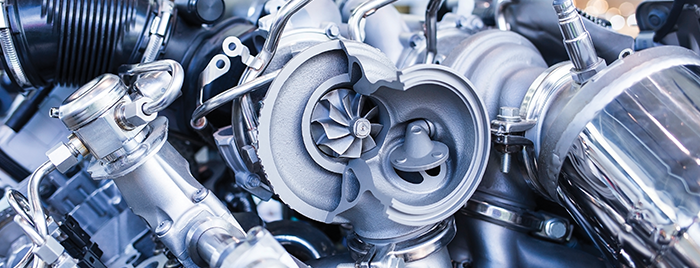In the summer of 2012, the federal government handed the auto industry a major technological challenge by setting a fuel-economy goal of 54.5 miles per gallon as the industry standard by 2025.
By comparison: In 2012, the standard was 29.7 mpg, which was raised to 35.5 mpg in 2016.
“It’s a challenging target,” said Ahmet Selamet, Ph.D., an Ohio State professor in the Mechanical and Aerospace Engineering Department. “In the last decade, there has been tremendous pressure to improve fuel economy. Well, it’s no longer voluntary.”
Selamet is working to understand and improve fuel economy in spark-ignition (SI), or gasoline, engines – which make up 98.7 percent of the 19.3 million new vehicles that hit the road each year. Selamet uses the computational fluid dynamics (CFD) software Star CCM+ on Ohio Supercomputer Center systems to perform detailed simulations of a turbocharger centrifugal compressor. These simulations deliver insight into characteristics, such as flow separation, surge instabilities and extending the low-flow compressor operating range, which could significantly help make engines more fuel efficient.
“While we keep improving, the vehicle mass goes up, so the engine has to work harder, and your improvements end up in another aspect of the car,” Selamet said. “So one of the key enablers is to bring turbochargers into gasoline engines and integrate them.”
Turbochargers achieve boost by using the exhaust flow from the engine to spin a turbine connected to the compressor. The turbine is connected to the exhaust and the compressor is connected to the intake side of the engine. The compressor takes the intake air and increases the pressure before it goes into the engine, boosting it.
“The end result is we are able to do more work and get more torque and power out of the engine for the same displacement,” Selamet said. “We get more out of the engine by using otherwise wasted fuel energy.”
The insight gained from the CFD simulations are taken to Selamet’s turbocharger facilities at OSU’s Center for Automotive Research (CAR) for physical testing. By accurately predicting compression system surge, the performance and fuel efficiency of SI engines can be improved.
“What we do is understand the basic physics, and that improved understanding goes into predictive tools automotive companies use,” Selamet said. “It’s a demanding task, and we would not be able to make significant progress without computational solutions.”
###
Written by Ross Bishoff
Project Lead: Ahmet Selamet, Ph.D., The Ohio State University
Research Title: Simulation of surge in centrifugal compression systems for improved stability and fuel efficiency
Funding Source: The Ohio State University
Website: engine.osu.edu

